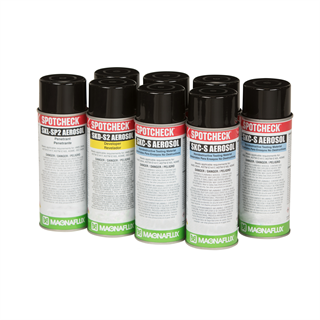West-7
Aluminum
- Joined
- May 24, 2019
I've been getting more and more aluminum repair work in. So far I've been successful but I'm still paranoid about cracks and failures. I want to know that I'm doing these repairs to the best of my ability.
These repairs have been weighing heavy on my mind because I feel I don't know as much as I should about doing them.
Trying to learn as much as I can about aluminum repairs. If anybody has any resources they'd recommend I'd greatly appreciate it.
What are the best methods to identify cracks and where they end? I'm concerned that one day I may miss the end of a crack and have my repair fail in service. Hasn't happened yet but I know how crack prone aluminum can be especially around welds and repairs.
Normally what I'll do to a crack is wipe with acetone, hit it with a stainless hand brush(brushing in one direction) to remove the oxide layer, wipe again with acetone second separate "clean" stainless brush again wipe with acetone drill the ends and then V the crack out with a carbide burr or end mill. Is there a better way?
I try to do most repairs with a/c tig due to the cleaning action. Sometimes Ill do a cleaning pass before welding(Dynasty 400 and Syncrowave 350) but do have a 350p with push/pull and a dedicated aluminum millermatic 200 with custom 8' gun with a nylon liner and spool gun. Also have a spoolmatic 30a.
The only two filler metals I use and have are Nexal and Lincoln 4043/5356 superglaze.
Most repairs are on 5052/6061 or mystery stuff. I need to get better at identifying what specific type of aluminum I'm working with. Right now I rely on calling the manufacturer etc or just using 4043 .
I'll sometimes grind larger repairs or welds out with aluminum specific grinding wheels. I don't like the fact that I could just be impregnating the oxide layer into the base metal with powered wheels and abrasives. I was thinking about trying powered stainless steel end brushes for corners. Bad idea?
Is there a type of media I can blast to prep aluminum that won't impregnate in the surface or cause contamination and possible failure in the welds?
Can I use carbon arc gouging to remove welds? Been meaning to try it out but haven't had any scrap parts To try it on
Plasma gouging? How does plasma cutting affect the aluminum for welding? Is there any special prep needing after plasma cutting or gouging?
If it's a large or cast part I'll preheat in a oven or with the torch and allow it to cool slowly. Will do the same with parts contaminated with oil to burn off.
I try to preheat for at least my starts when using wire feed to avoid cold starts and incomplete fusion on starts.
What else can I be doing or do different?
These repairs have been weighing heavy on my mind because I feel I don't know as much as I should about doing them.
Trying to learn as much as I can about aluminum repairs. If anybody has any resources they'd recommend I'd greatly appreciate it.
What are the best methods to identify cracks and where they end? I'm concerned that one day I may miss the end of a crack and have my repair fail in service. Hasn't happened yet but I know how crack prone aluminum can be especially around welds and repairs.
Normally what I'll do to a crack is wipe with acetone, hit it with a stainless hand brush(brushing in one direction) to remove the oxide layer, wipe again with acetone second separate "clean" stainless brush again wipe with acetone drill the ends and then V the crack out with a carbide burr or end mill. Is there a better way?
I try to do most repairs with a/c tig due to the cleaning action. Sometimes Ill do a cleaning pass before welding(Dynasty 400 and Syncrowave 350) but do have a 350p with push/pull and a dedicated aluminum millermatic 200 with custom 8' gun with a nylon liner and spool gun. Also have a spoolmatic 30a.
The only two filler metals I use and have are Nexal and Lincoln 4043/5356 superglaze.
Most repairs are on 5052/6061 or mystery stuff. I need to get better at identifying what specific type of aluminum I'm working with. Right now I rely on calling the manufacturer etc or just using 4043 .
I'll sometimes grind larger repairs or welds out with aluminum specific grinding wheels. I don't like the fact that I could just be impregnating the oxide layer into the base metal with powered wheels and abrasives. I was thinking about trying powered stainless steel end brushes for corners. Bad idea?
Is there a type of media I can blast to prep aluminum that won't impregnate in the surface or cause contamination and possible failure in the welds?
Can I use carbon arc gouging to remove welds? Been meaning to try it out but haven't had any scrap parts To try it on
Plasma gouging? How does plasma cutting affect the aluminum for welding? Is there any special prep needing after plasma cutting or gouging?
If it's a large or cast part I'll preheat in a oven or with the torch and allow it to cool slowly. Will do the same with parts contaminated with oil to burn off.
I try to preheat for at least my starts when using wire feed to avoid cold starts and incomplete fusion on starts.
What else can I be doing or do different?



